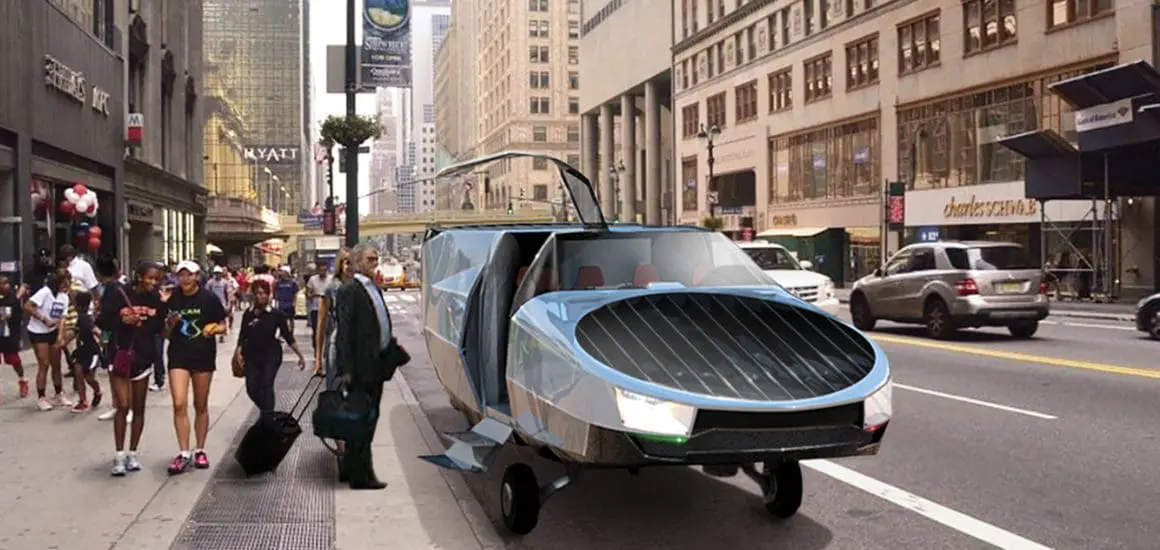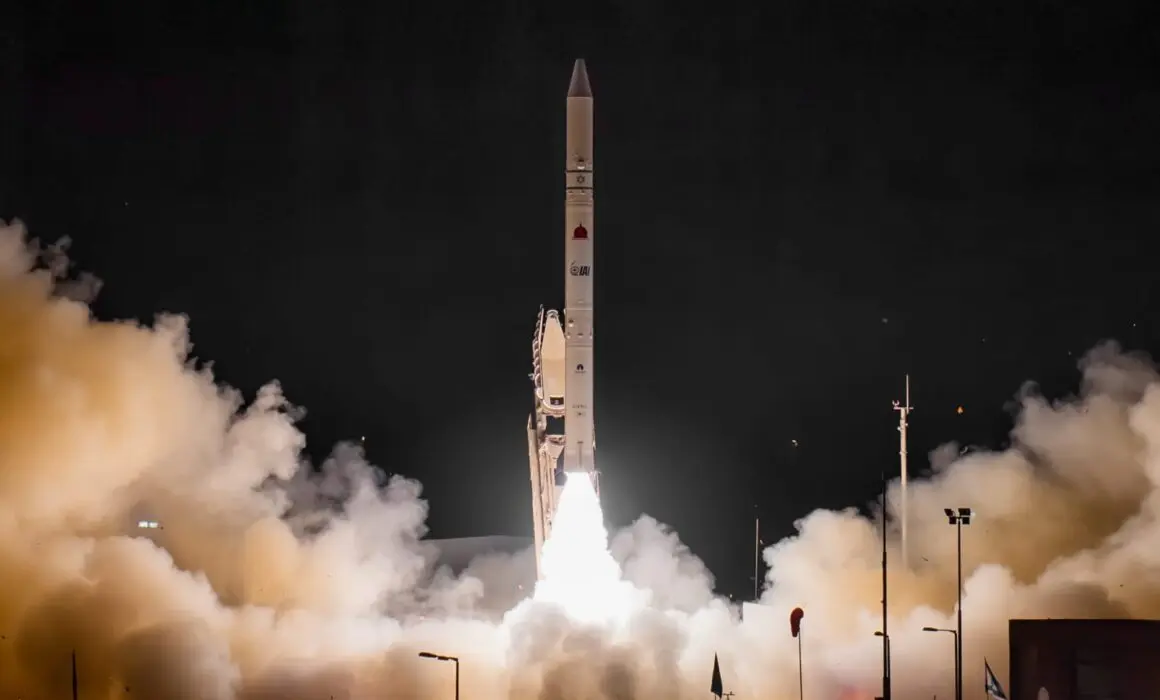Alumni Corner: Rafi Yoeli M.Sc. ’84, Ph.D. ’87

Rafi Yoeli with his Cormorant, credit Rafi Yoeli.
After selling his first aviation company, Rafi Yoeli had time to ponder his next move. He’d already served in the Israeli Air Force, earned two Technion graduate degrees as well as a pilot’s license, and had worked at Boeing and Israel Aircraft Industries, where he was one of the chief designers of the Lavi Fighter Jet.
What did he land on? The flying car.
Growing up in the 1960s, Yoeli was enamored with a rudimentary flying machine called Airgeep. But the Vietnam War was in full swing and funding that could have gone to Airgeep went to helicopters. “I said to myself: Aerospace technology has come a long way since the Airgeep. It’s time to dust off the concept and see if we can make it viable. The dream was there but perhaps the technology wasn’t ready.”
So after more than 40 years of advances in the aeronautics industry, Yoeli established Urban Aeronautics Ltd. in 2002 to build VTOLs, vertical takeoff and landing vehicles — but not just another helicopter, a much more compact vehicle that would truly earn the name flying car. “A few years ago, I couldn’t say these words,” Yoeli said. “But it’s a true flying car. And it’s very compact and very powerful.” Flying cars could be used for everything from easing city street congestion to medical evacuations. According to Yoeli, his would be the world’s safest, quietest, most compact flying car ever. With 300 test flights under its belt since 2016 and favorable media coverage from TIME and other outlets, Urban Aeronautics appears to be well on his way.
The company has spent much of the past decade developing flying cars that are similar to helicopters but without their Achilles Heel: the overhead and tail rotors and their exposed blades. The rotors, Yoeli said, can lead to accidents if they nick a tree or telephone line. And their whirling blades make it difficult to get in and out of tight urban areas, while also being extremely noisy.
Instead, Urban Aeronautics relies on what the company defines as ‘Fancraft’ technology, replacing the external rotors with two internal fans integrated into the front and back of the passenger cabin, making their flying cars safe and quiet. The company also employs light composite materials, sensors, and fly-by-wire technology, or computer-operated flight control systems, all unavailable in Airgeep’s day. Two cars are under development: the unmanned Cormorant, and its showcase VTOL, the manned CityHawk.
“We’ve cracked the code of how to achieve the same speed, the same payload capacity, the same range, and the same altitude as a normal helicopter,” Yoeli said of the CityHawk, “but with a vehicle the size of a Humvee.” The CityHawk can fly at 100 to 120 knots or between 115 to 138 miles per hour, reach an altitude as high as 16,000 – 18,000 feet, and travel about 125 miles with full payload, or twice that with half the passenger load. Reminiscent of the flying car on the animated 1960s TV show, “The Jetsons,” which carried George and Jane Jetson in the front and their two children in the back, CityHawk has seats for five passengers plus a pilot.
“It’s more than just flash,” the Technion graduate said of the idea many would consider fanciful. Some 600 private helicopters ferry executives to their offices in Sao Paulo, Brazil every day, avoiding epic traffic jams and violence in the streets, Yoeli said. CityHawk could do the job more efficiently, landing four CityHawks on a helipad now reserved for just one helicopter. CityHawks are also ideal for medical rescue and evacuation. Currently, when a person has a heart attack or accident in the city, a typical helicopter has to land half-a-mile away. “Paramedics are running with their equipment and precious time is lost. That’s not good enough,” he said. City Hawk will be able to get as close as a car and even rescue people directly from high-rise buildings.
The Cormorant has its own important missions. Because it is unmanned, it is ideal for disaster response scenarios such as a nuclear meltdown and firefighting. The Cormorant can also be used in agriculture, powerline maintenance, and on the battlefield, carrying supplies to the soldiers and returning with wounded that need urgent medical attention.
Yoeli was born in Tel Aviv and spent some of his youth in Switzerland where his father was studying cartography. He did his military service in the Israeli Air Force, first as an air traffic controller and later on as an engineer repairing aircraft. Following his service, Yoeli earned his bachelor’s degree at Tel Aviv University. From 1976 to 1982, he worked at Israel Aerospace Industries (IAI), Israel’s foremost state-owned aerospace and aviation manufacturer. During that period, he helped develop the Lavi fighter as well as several business jets, and earned his civilian pilot’s license for helicopters and planes while living in Seattle as an IAI liaison to Boeing.
After IAI, he returned to his studies, earning his master’s degree in aeronautics and his Ph.D. in artificial intelligence — both at the Technion in 1984 and 1987, respectively. “I loved the Technion, every minute of it,” he said. Yoeli lived in a neighborhood just above the Technion, and he relished the half-mile walk through the woods to campus. “These were fantastic years. The freedom of academic life and studying, the facilities available to me. I just dove into it,” he said. His second child was born at that time, and he belonged to the health club and pool. “So, the family spent a lot of time on campus too. My years at the Technion were some of the best I remember.”
In 1989, he founded his own company, Aero Design & Development Ltd. AD&D developed applications for helicopters that were servicing the Israel Electric Company, as well as a series of aircraft including an unmanned aerial vehicle adopted by the IDF and renamed Skylark. Yoeli sold the company in 2002 to Elbit Systems, one of Israel’s premier aerospace and defense companies, before launching Urban Aeronautics.
So when will the cars take to the skies? In August 2020, Urban Aeronautics signed an agreement with U.S.-based Hatzolah Air to help develop, produce, and market CityHawk for emergency medical service. The company is also teaming up with IAI and Boeing to bring the flying cars to the marketplace. Urban Aeronautics is teaming up with IAI, Boeing, and other large aerospace partners to bring the flying cars to the marketplace. Yoeli is designing both the Cormorant and CityHawk to comply with current Federal Aviation Administration (FAA) standards and anticipates the Cormorant to come out first in approximately three years from now. “We’re already getting calls from all over the world about the Cormorant and CityHawk.” Cormorant will be used for both defense and civilian purposes, he said. The CityHawk, a manned civil aircraft, is expected to start service as a rescue vehicle in around 2026.
By 2028 or 2030, he hopes to replace CityHawk’s jet fuel-powered turbine engines with electric engines powered by hydrogen fuel cells. Hydrogen fuel cells have three times the power of fossil fuels and are 100% sustainable. “We think it’s the way of the future,” Yoeli said.
Flying cars are indeed gaining traction. In late July 2020 the state of New Hampshire signed a bill into law that legalizes driving “roadable aircraft” on public roads. However, the new “Jetson Bill” stipulates that takeoff and landing in airplane mode can only happen at an airport. As Yoeli sees it, his flying car is more advanced than what New Hampshire lawmakers had in mind.
“We’ve designed an aircraft that doesn’t need either wings or exposed rotors and is so compact that it can literally take off and land anywhere,” he said. “It’s the first aircraft that can offer genuine door-to-door aerial mobility.”




